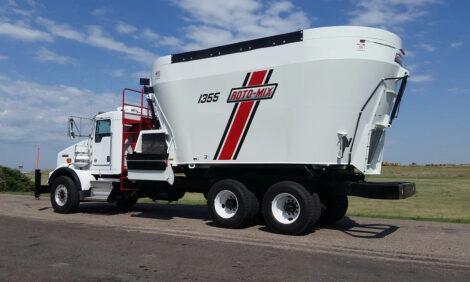



Mexico Livestock and Products Semi-Annual - March 2007
By USDA, Foreign Agricultural Service - This article provides the cattle industry data from the USDA FAS Livestock and Products Annual 2007 report for Mexico. A link to the full report is also provided. The full report includes all the tabular data which we have omitted from this article.Executive Summary
Mexican cattle inventories are expected to decline slightly in calendar year 2007 due in part to increasing exports to the United States and the need for feedlot operators to reduce inventories due to increasing feed costs. Cattle slaughter and cattle export figures are forecast higher in 2007. Beef production is forecast slightly higher, along with total consumption and imports. Mexico is likely to continue importing grain-fed beef from the United States to meet growing demand from the hotel and restaurant sectors as well as from the general population.Production
The CY 2007 cattle production forecast is unchanged from post’s previous estimate, somewhat higher than the 2006 level. Despite a larger calf crop and higher imports, total 2007 cattle inventories are forecast slightly lower due to increased slaughter and larger cattle exports. Feedlot placements could decline in 2007 due to higher feed costs. Less than one-third of Mexico’s beef production comes from feedlot operations, which are most affected by higher grain prices. Beef production for 2007 is forecast to slightly exceed the 2006 level, reflecting the continued growth in demand.Consumption
Year to year beef consumption continues to increase due to growing consumer demand for meat protein and general population growth. Demand for beef is growing more rapidly among the middle and upper population segments, particularly in Mexico’s larger cities where disposable income is higher. Demand from Mexico’s HRI industry also remains strong. There is no change in the consumption estimate for CY 2006.Trade
Imports of slaughter cattle and beef are forecast upward from the previous year’s figures due to expected improvement in the economy and consumer demand for meat protein. Trade sources estimate that total beef imports from the U.S. will include 90 percent boxed beef and 10 percent beef carcasses in CY 2007. Most of this beef will be rounds and chucks (70 percent), with the remainder comprised of high quality cuts (30 percent). Beef imports from the U.S. should continue to increase because of competitive prices and quality, while beef from most non-NAFTA countries is still subject to high import tariffs or health restrictions due to BSE and Foot and Mouth Disease.Cattle exports to the United States in 2007 are forecast to increase from post’s previous estimate due to continued improvements controlling cattle tuberculosis and brucelosis by the Mexican government, and a slightly improved calf crop. Domestic feeder steer exports to the United States in CY 2006 have been revised upward as well. Cattle exports for CY 2005 are revised downward reflecting final government data.
Policy
In October 2006, SAGARPA agreed to allow imports of U.S. dairy cattle, which were banned following the detection of BSE in Washington State in 2003. Trade has since resumed, and approximately 850 cattle were imported into Mexico as of December 2006. Further information and export requirements for shipping dairy cattle to Mexico can be found on the APHIS website using the following link.http://www.aphis.usda.gov/vs/ncie/iregs/animals/mx.html
Marketing
Imports of breeding dairy cattle and animal genetic products into Mexico are normally performed directly by dairy cattle producers, medium and large dairy owners, distributors, and government institutions. In some cases, Mexican cattle buyers receive financial assistance from government-funded programs (PROGAN) to purchase animals of high quality genetics. Participation in major national and state livestock shows may provide opportunities for sales of U.S. livestock genetics to Mexican livestock producers.Marketing promotion programs for U.S. red meats through the U.S. Meat Export Federation (USMEF) office in Mexico City enable exporters to access niche markets for U.S. products in the hotel and restaurant trade, and other sectors. Prospects exist in the short and medium terms for increased meat sales fueled by Mexico’s population growth and insufficient domestic production. The development of supermarket chain stores, fast food restaurants and the tourist sector all present opportunities for market growth.
Further Information
To view the full report, including tables, click here (PDF Format)To view our complete list of 2007 Livestock and Products Semi Annual reports, please click here
March 2007


